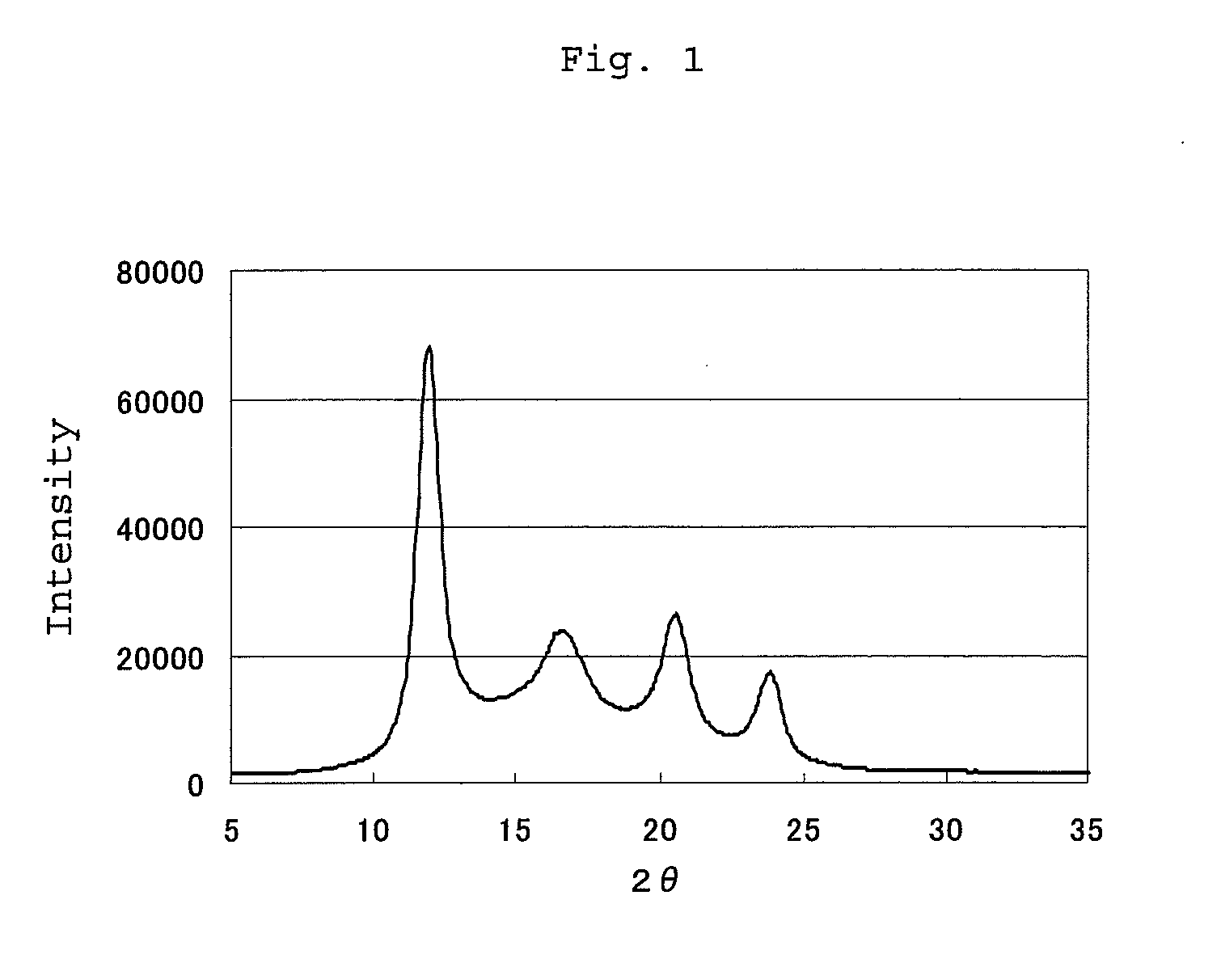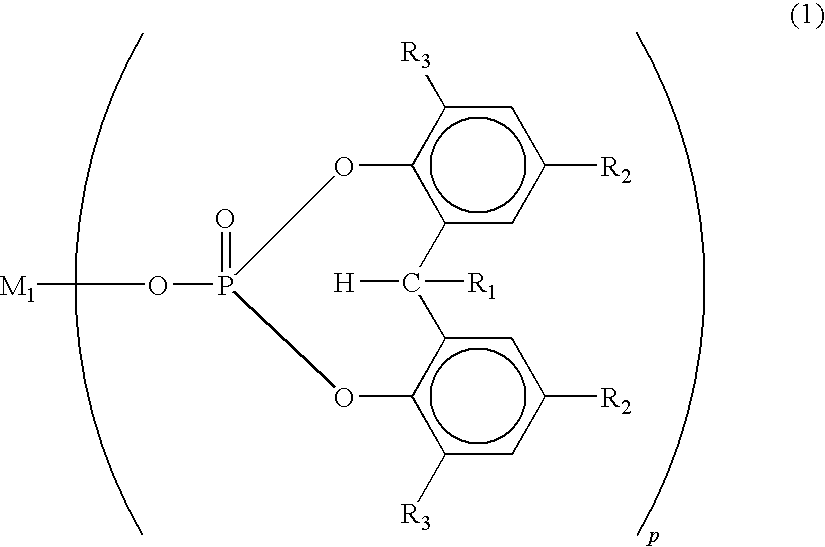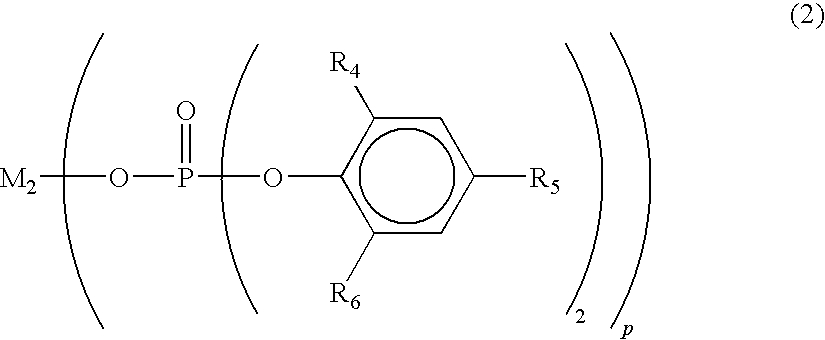POLYLACTIC ACID FIBER AND MANUFACTURING METHOD THEREOF( as amended
a polylactic acid fiber and manufacturing method technology, applied in the field of polylactic acid fibers, can solve the problems of unsuitable use, unsatisfactory heat resistance of stereocomplex polylactic acid fibers, inability to put them to practical use, etc., and achieve excellent strength, heat resistance and heat shrinkage resistance.
- Summary
- Abstract
- Description
- Claims
- Application Information
AI Technical Summary
Benefits of technology
Problems solved by technology
Method used
Image
Examples
production example 1
Production of Polymer A1
[0083]100 parts by weight of L-lactide having an optical purity of 99.8% (manufactured by Musashino Chemical Laboratory, Ltd.) was added to a polymerizer, the inside of the polymerizer was substituted by nitrogen, and 0.2 part by weight of stearyl alcohol and 0.05 part by weight of tin octylate as a catalyst were added to carry out polymerization at 190° C. for 2 hours so as to produce a polymer. This polymer was washed in a 7% acetone solution of 5N hydrochloric acid to remove the catalyst so as to obtain polymer A1. The obtained polymer A1 had a reduction viscosity of 2.92 (ml / g) and a weight average molecular weight of 190,000. It had a melting point (Tm) of 168° C. Its crystallization point (Tc) was 122° C.
production example 2
Production of Polymer A2
[0084]100 parts by weight of D-lactide having an optical purity of 99.8% (manufactured by Musashino Chemical Laboratory, Ltd.) was added to a polymerizer, the inside of the polymerizer was substituted by nitrogen, and 0.2 part by weight of stearyl alcohol and 0.05 part by weight of tin octylate as a catalyst were added to carry out polymerization at 190° C. for 2 hours so as to produce a polymer. This polymer was washed in a 7% acetone solution of 5N hydrochloric acid to remove the catalyst so as to obtain polymer A2. The obtained polymer A2 had a reduction viscosity of 2.65 (ml / g) and a weight average molecular weight of 200,000. It had a melting point (Tm) of 176° C. Its crystallization point (Tc) was 139° C.
example 1
Molten Spun Yarn
[0085]Chips of the polymers A1 and A2 were prepared and mixed together in a A1 / A2 weight ratio of 50 / 50 by a twin-cylinder mixer to prepare a chip blend which was then dried at 110° C. under reduced pressure for 5 hours. 0.5 part by weight of sodium 2,2-methylenebis(4,6-di-tert-butylphenol)phosphate (Adecastab NA-11) (average particle diameter of 5 μm) was added to 100 parts by weight of this chip, and the resulting mixture was molten at 230° C. by a melt spinning machine having a double-screw extruder and ejected from a spinneret having 201 ejection holes with a diameter of 0.25 μm at a rate of 350 g / min.
[0086]The obtained yarn was cooled by a spinning cylinder, bundled, applied by a lubricant and wound up at a rate of 1,250 m / min to obtain unstretched yarn. This unstretched yarn had a Sc ratio of 0% and had a single crystal melting peak derived from stereocomplex at 224° C. when measured by a differential scanning calorimeter (DSC).
(Stretching, Heat Treatment)
[0087...
PUM
| Property | Measurement | Unit |
|---|---|---|
| heat shrinkage factor | aaaaa | aaaaa |
| melting peak temperature | aaaaa | aaaaa |
| particle diameter | aaaaa | aaaaa |
Abstract
Description
Claims
Application Information
 Login to View More
Login to View More - R&D
- Intellectual Property
- Life Sciences
- Materials
- Tech Scout
- Unparalleled Data Quality
- Higher Quality Content
- 60% Fewer Hallucinations
Browse by: Latest US Patents, China's latest patents, Technical Efficacy Thesaurus, Application Domain, Technology Topic, Popular Technical Reports.
© 2025 PatSnap. All rights reserved.Legal|Privacy policy|Modern Slavery Act Transparency Statement|Sitemap|About US| Contact US: help@patsnap.com



